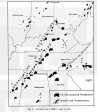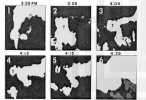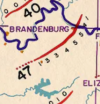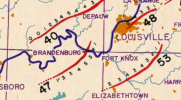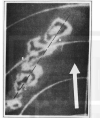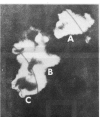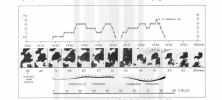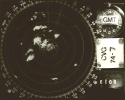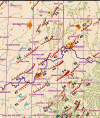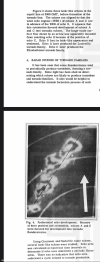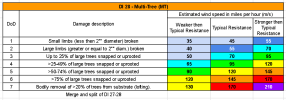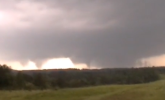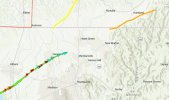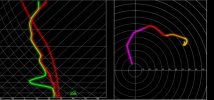(Let me know if I’m swamping this thread with too much and I’ll throw this in its own thread)
The northern portion of the 4/3/74 super-outbreak (IN/OH/Northern KY) seemed to have a “string of pearl” storm mode starting out, similar to 3/14. Supercells that were obviously discrete, but still banded in some portions.
This is a shot from the Evansville radar looking directly into northern KY.
View attachment 46827
Supercell A went on to produce the aforementioned Brandenburg/Louisville tornado family, which were tornados 47, 48, and 49 on Fujita’s map. Supercell B was positioned unfavorably for inflow due to Supercell C’s proximity. B never produced a tornado and dissapated. Supercell C was prolific and produced the Elizabethtown KY tornado family (tornados 52 through 56 per Fujita’s map). This family included 3 F4s and spawned the Frankfort KY F4 that tornadotalk has a wonderful article on. Supercell C would trek all across Kentucky and produce its final tornado on the KY/OH line. It’s pure conjecture but I hypothesize the developing echo return south of supercell C later produced the Danville KY tornados (58 & 59 on Fujita’s map). I’ll have to research that further.
Interestingly enough, the southern Indiana cells displayed a similar configuration, one hour earlier.
View attachment 46828
At this time Supercell A was producing tornado 35, and would later drop the Hamburg F4 (tornado 36).
Supercell B was positioned unfavorably relative to the other storms. Similar to the KY Supercell B it never produced a tornado.
Supercell C was producing the DePauw F5 at this time and was also extremely prolific in its own right. It was responsible for 6 tornados. 2 were F5s, 3 F4s, and one F2 (40-45 on the map). It seems Supercell C was a much more efficient cycler since it had a completely wide open inflow sector to its south with minimal interference from other storms.
Here is Fujita’s analysis of Supercell A showing its appearance throughout its lifetime as well as when it was producing tornados.
View attachment 46829
Finally, the infamous Cincinnati radar photo. By now storm mode was
fully discrete. The Xenia cell can be seen to the northeast of the radar site. The monster cell closest northwest to the radar is the Hamburg F4. The well developed cell southwest of the site I believe is the DePauw cell which would later impact Cincinnati as the Sayler Park F5. Supercell B is possibly the strung out cell north of the Sayler Park supercell. I believe the furthest cell to the northwest is the Muncie Indiana F4 supercell (tornados 31-33).
View attachment 46830
View attachment 46831
I’ll definitely be covering the Central KY to Alabama portion too!
